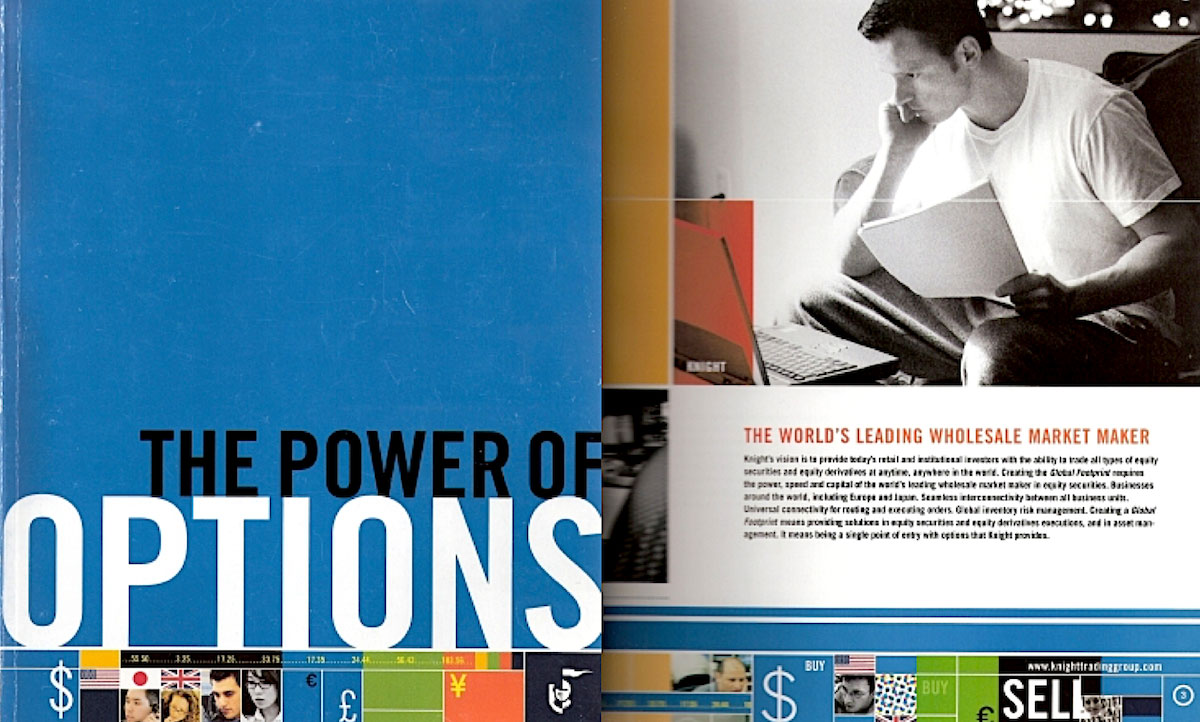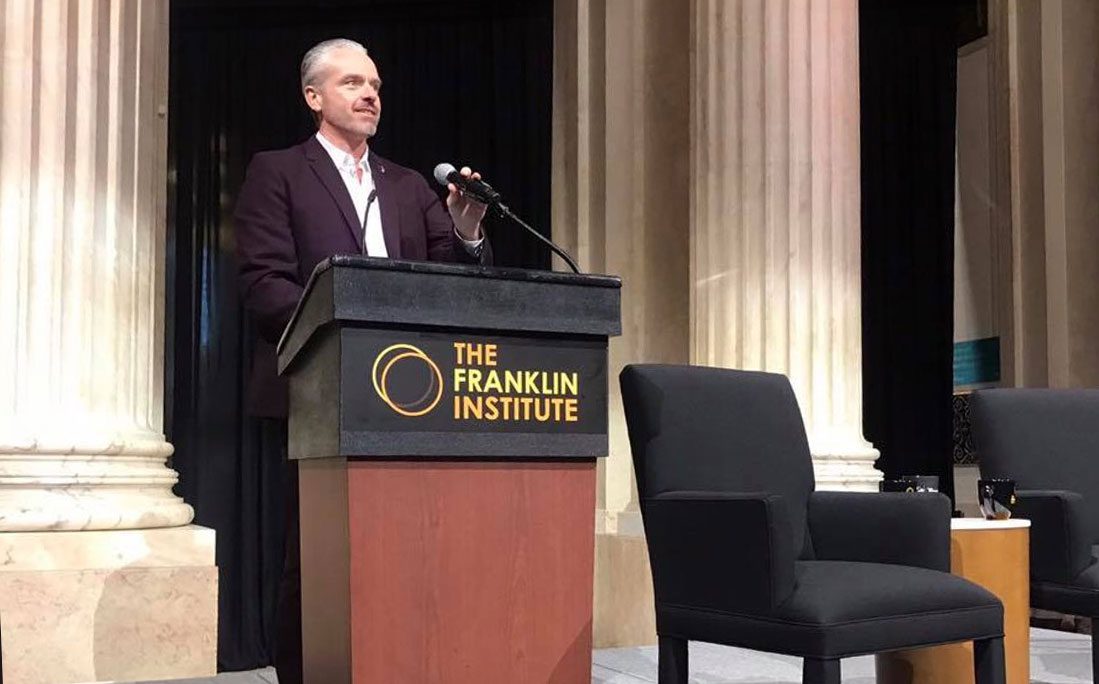In 1995, Robert Smith entered the financial industry with lessons passed down from generations who worked in the industry before him.
Robert’s father worked in foreign exchange sales and trading, his grandfather built an investment management and independent investment banking firm to focus on insurance and financial services businesses, his great-grandmother worked in insurance and securities brokerage, and his great-great-grandfather created financial vehicles “in divine service to others.”
Early in his career, Robert managed capital and traders at the world’s largest market making firm and at a multi-strategy investment firm.

Knight-2000-Annual-Report-1
Knight, 2000 Annual Report
After witnessing the attacks on New York’s World Trade Center, something shifted in Robert, and he took a sabbatical to reconnect with nature.
Two years later, he returned to New York City to pursue a new career in finance – one with meaning and human connection. Robert realized that if he had generated profits for family offices and institutional investors – the clients of the firms where he had worked – rather than for the firms themselves, he would have greater expansion and fulfillment in the process of creating a sustainable business.
In 2005, Robert observed that most family offices did not have the research capabilities found within large investment firms and, when it came to investment banking transactions, family offices were often underserved by bulge bracket banks, who catered to their top commission paying institutional clients.
Robert would focus his concentrated energies on serving family offices at the highest level, constantly assessing how he could serve and support their specific interests.
He worked directly for two family offices – one in Boulder, Colorado, where he had spent time during his sabbatical, and one in Stamford, Connecticut, where he conducted company and manager due diligence and de-risked investments.
Robert also led institutional equity sales at three investment banks in New York City, where his primary clientele was family offices and fund investors, and, during this time in his career, he also built and led the international equities and equity capital markets division of an investment bank. Over a period of 11 years, Robert directed investors to participate in more than 200 financings.
In 2014, he observed that members of family offices had a strong desire to co-invest with other family offices to create impact, but that their interaction was often limited to meeting behind closed doors, rather than attending conferences. As a solution, he founded Conscious Capital “to connect family offices and fund investors in collaborative and safe environments to evaluate opportunities that create social impact beyond financial return.”
In its first four years of operation, Conscious Capital invited members of family offices to participate in 30 free events, where they could meet other like-minded investors and hear from experts in their fields, such as key opinion leaders, researchers at academic medical centers, environmental scientists, government officials, economists, leading fund managers, civil society leaders, entrepreneurs of innovative companies and nonprofit organizations, Nobel Prize winners, Pulitzer Prize winners, bestselling authors, artists and musicians.
Conscious Capital’s events also gave members of family offices the opportunity to consider the direction of industries and markets, as well as the risks that might disrupt a well-thought out portfolio designed for future generations.
But, to create a meaningful experience, Robert wanted to give event attendees something else – the dream they did not know they had – a surprise. Having strategically analyzed consciousness and cultures, beyond figures and portfolios, Conscious Capital identified possible unions, then lifted these unions to new levels with the amplification of consciousness to a new union that individually in singularity was unimagined but now realized.

100-Visionary-Leaders-1
Real Leaders, Spring 2018
Robert serves as Senior Advisor for Fundraising and Partnerships to the Permanent Secretariat of the World Summit of Nobel Peace Laureates, which organizes the World Summit with the support of Nobel Peace Laureates and in partnership with hosting municipalities and prominent foundations.
He serves as a member of the Sustainable Investing Advisory Board of the United Nations Capital Development Fund (UNCDF), which makes public and private finance work for the poor in the world’s Least Developed Countries (LDCs).
Robert served as International Trustee of Religions for Peace International, the world’s largest and most representative multi-religious coalition advancing common action for peace, since 1970, by working to advance multi-religious consensus on positive aspects of peace as well as concrete actions to stop war, help eliminate extreme poverty and protect the earth.
Robert served as a member of the President’s Leadership Council of Thomas Jefferson University and Jefferson Health, the largest academic medical center in Philadelphia. In 2017, the year Thomas Jefferson University Hospitals joined the Honor Roll of U.S. News & World Report, a distinction awarded to 20 hospitals that “deliver exceptional treatment across multiple areas of care,” Conscious Capital hosted an event at the hospital to connect some of its researchers and members of family offices. In 2018, also in Philadelphia, Conscious Capital brought Dr. Jane Goodall, one of the most famous woman scientists, to The Franklin Institute for an inspiring and unforgettable event for all ages.


Robert serves as Chairperson and a member of the Board of Directors of The Harmon Foundation, a private foundation established in 1922 by his great-great-grandfather William E. Harmon for charitable and humanitarian purposes.
Building upon his family’s commitment to provide “inspirational and tangible help for young people,” Robert served as Senior Advisor to the Africa Rising Foundation, a nonprofit organization founded by Ndaba and Kweku Mandela, grandsons of Nelson Mandela, in order to contribute to the development of the African continent and serve as a conduit for the New African Generation that is committed to promoting Africa through a series of campaigns that address the continent’s socio-economic challenges.
Robert serves as a member of the Board of Directors of the Chaeli Foundation USA, a nonprofit organization that focuses on growing more inclusive and empowered communities, especially through the inclusion of children, youth and adults with disabilities.
He is a past member of the Board of Directors of Childhood Cancer Kids, a nonprofit organization that increases childhood cancer awareness and elevates the spirits of children with cancer.
Robert serves as a member of the Board of Trustees of The Children’s Village (and a member of the Board of Directors of The Children’s Village Institute Endowment), a nonprofit that works in partnership with families to help society’s most vulnerable children so that they become educationally proficient, economically productive, and socially responsible members of their communities.
He served as a member of the Board of Directors of Tuesday’s Children, a response and recovery nonprofit organization created in the aftermath of the attacks on New York’s World Trade Center, that supports youth, families, and communities impacted by terrorism and traumatic loss.

